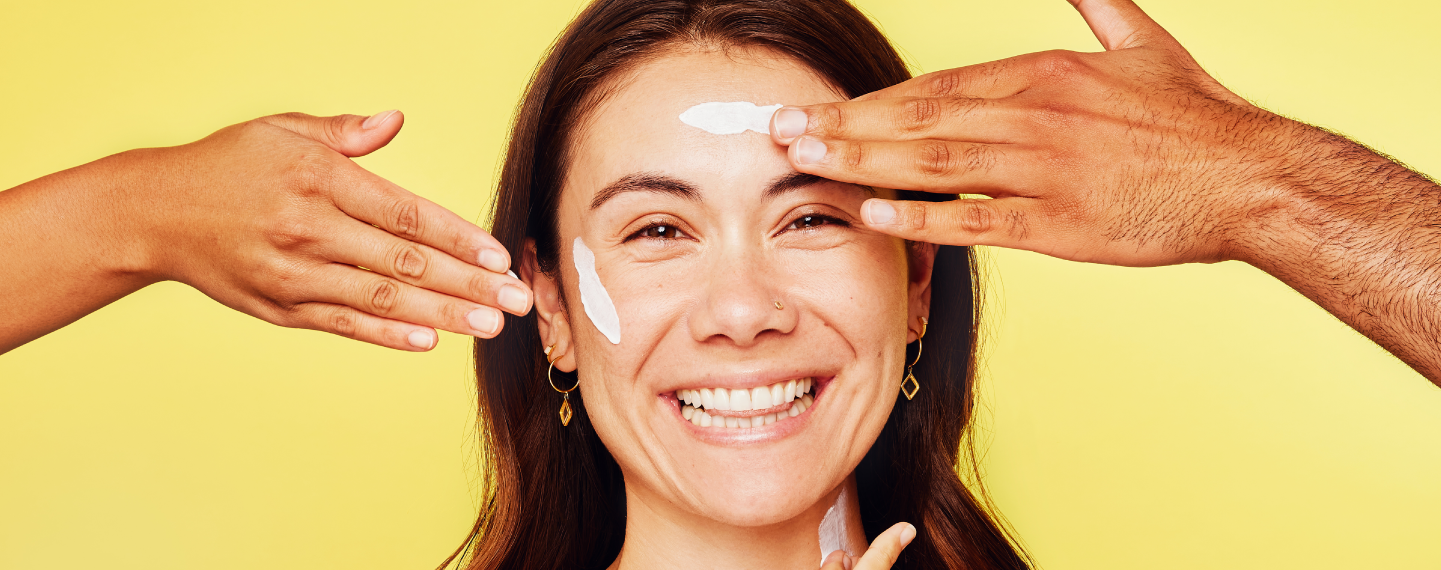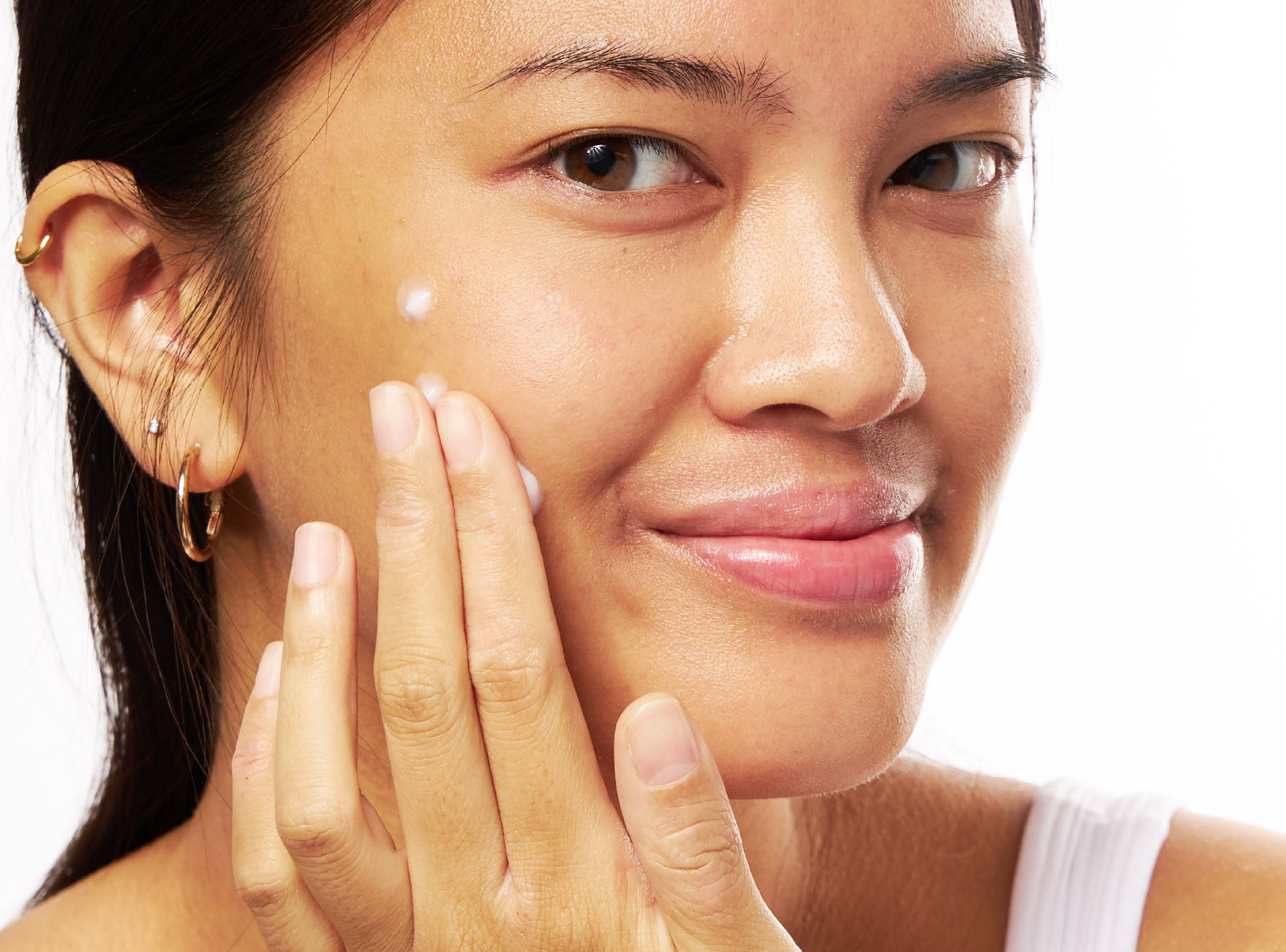Education
Light therapy for acne: Benefits & costs


SHARE
Education
Light therapy for acne: Benefits & costs
Medically reviewed by Kristin Hall, FNP
Written by Apostrophe Team
Last updated 4/1/2024
If it were left to us, we’d have our skin soft and dewy, with not a blemish in sight. But as the pimples, whiteheads, and blackheads across our backs and faces like to remind us — acne is a skin condition that can, and probably will make repeated appearances even long after the angsty teenage years are past.
If you live with acne, you’ve probably tried everything from gels and chemical peels, to sincere words of prayer to help with treating it. Other acne treatments include antibiotics, creams, and acne patches, but there�’s one treatment in particular that appears to be shining through for the management of acne — light therapy.
What Is Light Therapy?
Light therapy, otherwise known as phototherapy, is the use of artificial light sources like lasers and Light Emitting Diodes (LED) lights to penetrate the skin at a cellular level. This penetration helps to effect changes and treat skin conditions.
To the other skincare products and measures, light therapy must seem like an overachieving colleague — it has been shown to have beneficial effects on a number of skin conditions like wrinkles, acne scars, and in the healing of burns. It also has benefits in reducing UV damage and increasing pigmentation in pigmentary disorders like vitiligo.
Because acne is a really tough nut to crack, there isn't a one-light-zaps-all phototherapy option to remedy pimples, blackheads, whiteheads or acne pustules and nodules. Different types of light treatments, and sometimes a combination of the same, are used for the treatment of these skin lesions. They include:
Blue light devices
Red light devices
Blue + red light devices
At-home devices
Infrared light
Photopneumatic therapy
How Does Light Therapy Work for Acne?
Even though light therapy appears to be a new, shiny treatment for acne, its method of treatment has been in operation for quite some time. Look up if you don't believe it — no, really, rays from the sun have been proven as effective treatments against acne.
Sunlight decreases the number of androgenic hormones (known to cause acne) in the sebaceous gland. However, because exposure to sunlight also equaled exposure to its dangerous UVA and UVB rays, this made it a less-than-ideal treatment option for acne.
Phototherapy makes this process safer. Using visible blue light, the treatment of acne is made possible by killing acne-causing bacteria like P.acnes (now called c. acnes bacteria). Blue light also prevents the appearance of acne by reducing activity in the sebaceous glands, which prevents the overproduction of oil which can cause acne. Red light is believed to penetrate deeper into the skin tissue and may possess anti-inflammatory properties.
But don’t just take our word for it, let’s hear directly from science about their respective abilities in treating acne:
In a small study carried out on 21 subjects, the effectiveness of a self-applied blue light therapy for the treatment of mild to moderate inflammatory acne was put to the test. The study was to determine the amount of time it took to improve or resolve the blemishes and lesions on the face, the quality of the skin upon completion, the occurrence of new lesions, and the ease of using the product for the subject.
At the end of the study, subjects reported significantly reduced lesions and improved skin conditions.
In another study, the efficacy of blue light phototherapy was tested on 31 subjects with symmetrical facial acne. Each subject was treated on one side of their face with blue light, while the other side was left alone to act as a control.
Compared to the control side, the half of the face treated with blue-light showed improvements in their acne.
But what about the effects of red-light therapy? In another split-face study, 28 volunteers with mild to moderate acne were treated on one half of their face with portable red-light emitting devices. A significant improvement was noted in inflammatory and non-inflammatory lesions on the treated portion of the face at the conclusion of the study.
Red and blue-light therapy are often used in the treatment of acne, and are a proven, effective combination for its management. A study carried out on 24 subjects with mild to moderately severe facial acne alternated between red and blue lights for their treatment. The combination was found to be an effective, safe, and non-painful treatment for acne.
What Is the Best Light Therapy Treatment for Acne?
As already listed, there are a number of light therapy treatments for acne. Let’s examine each of them:
Blue, Red, and Blue + Red Devices
These devices are called visible light because they make use of colors that are plain to see.
As we've shown through the listed studies, they are effective in treating mild to moderate forms of acne. Visible light is not effective against blackheads, whiteheads, acne cysts, or nodules.
At-Home Devices
These are LED devices that make use of blue, red, and blue+red lights to treat acne. Some at-home devices are approved by the FDA for use.
If you’ve ever seen one of these devices light up, you probably wondered, can at-home light devices really clear acne?
Well, there are studies confirming that they can be effective in treating acne lesions.
However, there is no way to know if everyone will see results. You may need to use your LED device twice a day for at least four to five weeks. For noticeable changes, use for at least 30 minutes, other devices may require up to 60 minutes. At-home devices include facial masks or light pens.
Infrared Light
This refers to a type of electromagnetic radiation approved by the FDA for the treatment of mild forms of acne.
According to the American Academy of Dermatology, it cannot treat blackheads, whiteheads, cysts, or nodules.
Photodynamic Therapy
This type of therapy is advisable for more severe forms of acne like cysts and nodules. It requires a dermatologist to prep your skin with a solution to make it more sensitive to light.
Following this, a laser or light device will be applied to the skin to treat the acne.
Photopneumatic Therapy
This treatment is FDA-approved to treat whiteheads, blackheads, and some pimples.
It combines a laser treatment with a vacuum to remove excess oil and dead skin cells from the pores.
The best light therapy however depends on what works best for you. Should you feel that your acne could do with light therapy for treatment, be sure to reach out to have a chat with a dermatologist to decide on the best options for you.
Side Effects of Light Therapy
Because we can't have only nice things, light therapy, like most treatments, is not without its side effects. Should you use lasers or other light treatments to help manage your acne, there is a chance that you may experience stinging or burning on your skin.
This typically lasts only about a few hours or until the next day, so it's nothing to get too worried about.
Light therapy may however come with other rare side effects. Some of these include lingering pain, burns, or blisters. A change in skin color and scarring are also possible. Making sure to get treatment from a board-certified dermatology practitioner who frequently uses lasers can help to prevent these side effects.
In Conclusion
Light therapy makes for a really cool (and effective) way to manage acne, as well as other skin conditions.
Now you may notice some side effects following use, but these are usually minor, and any severe reactions can be avoided where the therapy is expertly handled.
You can try light therapy from the comfort of your home using at-home treatments, or you can have your therapy professionally administered by a qualified dermatologist. If you’re looking to treat skin concerns without the high price tag of in-clinic treatments, get connected with an expert derm team through Apostrophe to get access to prescription oral and topical treatments for your skin concerns.
Like what you just read? Sign up for our email list to get the scoop on skincare science delivered straight to your inbox.

Education
What is milia?
What is milia? Today, we’re jumping into one type of bump that you may have heard about most commonly in infants — milia.
Read More
Education
Best moisturizer for acne-prone skin
If you have combination acne-prone skin, figuring out which moisturizer is best for your skin might be tough. In this guide, we break down the best moisturizer for combination, acne-prone skin.
Read More
Education
How to build a face care routine
As you get into skincare, it might seem overwhelming, especially trying to figure out the order you're supposed to apply products in. Below, we detail how to build a face care routine for your skin!
Read More
